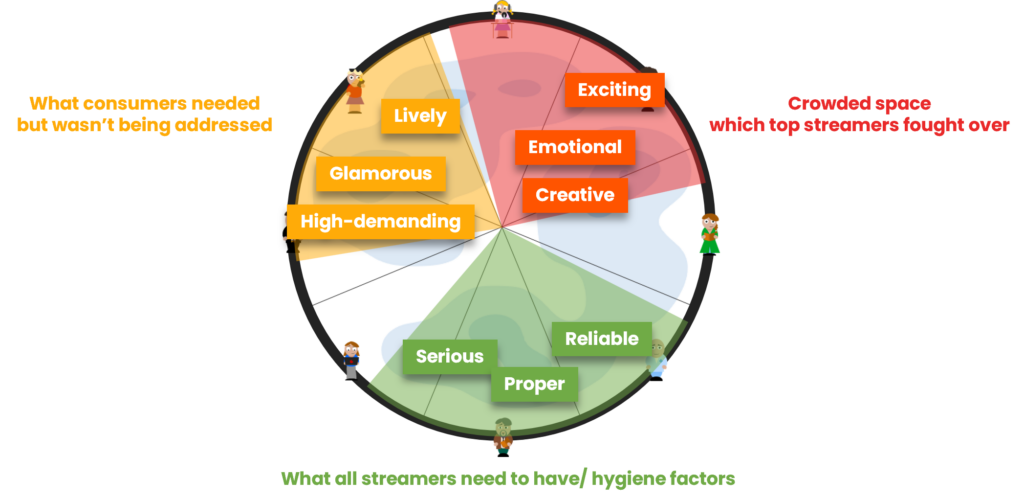One of the most effective ways to differentiate your business has always been to create a strong brand identity. Think Coca-Cola. Just the name conjures up images of its iconic red logo. But is this the only thing that defines Coca-Cola’s brand identity? No, it’s the whole brand experience, from fonts and packaging to advertising campaigns and customer interactions.
What is a brand identity?
At its core, a brand identity is the visual and content representation of a company’s personality. It encompasses elements such as logos, colours, fonts, messaging, and more; all of which create a holistic expression of what the brand stands for. With crowded markets where consumers are bombarded with choices, a strong brand identity can help businesses cut through the noise to make a lasting impression.
What makes a strong brand identity?
It’s not one thing. Building a strong brand identity involves several key elements:
Logo
A brand’s logo is its most recognizable symbol and serves as its visual anchor. It should be distinctive, memorable, and reflect the company’s personality. Take Coca-Cola, for instance. Its logo, featuring the iconic red script text, is instantly recognisable worldwide. The flowing script font exudes a sense of warmth, friendliness, and tradition, aligning perfectly with Coca-Cola’s brand personality of happiness, enjoyment, and nostalgia. The logo’s red colour, vibrant and energetic, further reinforces these characteristics, making it a powerful representation of the brand’s identity.
Colour palette
Colours evoke emotions and can have a significant impact on how a brand is perceived by consumers. Red, for example is often associated with passion, excitement, and energy. Brands like Coca-Cola and Red Bull use red in their logos to evoke feelings of vitality and dynamism. Yellow, on the other hand, is associated with optimism, happiness, and creativity. Brands like McDonald’s and IKEA use yellow to create a cheerful and inviting atmosphere for their customers.
Typography
Fonts play a crucial role in conveying a brand’s tone and personality. Script fonts, like Coca-Cola’s and Disney’s mimic handwriting and are often associated with elegance, femininity, and creativity. They can add a personal touch to a brand’s identity and evoke feelings of warmth and sophistication. Conversely, display fonts such as those used by Netflix and Spotify, are decorative and attention-grabbing, making them ideal to convey a bold and dynamic personality. These fonts often evoke a sense of creativity, innovation, and originality, which can be particularly appealing to audiences who value uniqueness and excitement.
Brand voice
Consistent messaging is key to establishing a strong brand voice audience. Take Coca-Cola, as the example. Whether it’s their iconic “Open happiness” campaign or the more recent “Taste the feeling,” the brand consistently delivers messages that evoke emotions of joy, positivity, and togetherness. These messages are not only reflected in their advertisements but also in their social media content, website copy, and even customer interactions. By maintaining this consistent brand voice across all channels, Coca-Cola has successfully ingrained its values and personality into the minds of consumers worldwide, fostering a strong emotional connection that goes beyond just a refreshing beverage.
Imagery and design elements
Visual elements such as images, graphics, and design elements play a crucial role in conveying a brand’s personality and values, and Coca-Cola is a prime example of this. From their classic red colour scheme to the iconic ribbon-like imagery featured on their cans, every visual aspect of branding is consistent with their brand’s identity.
By combining these with templates and guidelines that can be used throughout a business, and by carefully considering each of these elements and how they interact with one another, a company can create a cohesive brand identity that leaves a lasting impression.
Why is having a strong brand identity important?
A strong brand identity serves as the foundation upon which all marketing efforts are built, providing a clear and cohesive framework for how the brand is perceived and experienced by consumers.
Differentiation
In a crowded marketplace, a distinct brand identity helps a business stand out from competitors and attract the attention of potential customers.
Trust and loyalty
Consistency in branding builds trust and fosters loyalty among customers. When consumers know what to expect from your brand, they are more likely to become repeat customers and brand advocates.
Marketing effectiveness
A cohesive brand identity supports marketing efforts by creating a memorable and recognisable image. Consistent branding across all channels increases brand recall and enhances the effectiveness of marketing campaigns.
Business success
Ultimately, a strong brand identity contributes to the overall success and growth of a business. By increasing brand awareness, recognition, and customer engagement, it can help drive sales and revenue growth.
Why taking a step back is important before speaking with a brand agency
Everything we’ve discussed in this blog are important elements to build a strong brand identity (and Nepa’s Brand Asset studies can help here!). However, before engaging with a brand agency or designer to help you create or rebrand your product or service, it’s crucial to take a step back and conduct thorough research and introspection. Here’s why:
Audience analysis
Understanding your target audience’s demographics, preferences, and pain points is essential for crafting a brand identity that resonates with them. A Brand Touch study, for instance, can help you not only identify how your brand is currently perceived by consumers, but the personality traits that are currently contributing to success and those that you should highlight with your brand identity.
If you’re interested in learning more about Brand Touch, why not read out latest blog post?
Brand values and mission
Clarifying your brand’s values, mission, and vision provides a clear direction for developing your brand identity. Your brand identity should authentically reflect who you are as a company and what you stand for.
Competitive analysis
Assessing your competitors’ branding strategies can help you identify gaps and opportunities for differentiation. By understanding what sets your brand apart from the competition, you can position yourself more effectively in the market. A Brand Touch study can help you understand how both you and your competition are perceived by your consumers, and therefore identify potential whitespace to shift your brand identity for growth. Should Coca Cola focus on their reliable or confident sides, for example?

In conclusion, creating a brand identity that resonates with your audience requires careful consideration of various elements, including your logo, colour palette, typography, brand voice, imagery, and design elements. By building a cohesive brand identity that reflects your values, mission, and vision, you can differentiate your business, build trust and loyalty among customers, and ultimately drive success and growth. However, it’s essential to take a step back and conduct thorough research to ensure that you understand how to portray your brand, and where potential whitespace in the market lies to help you stand out.


